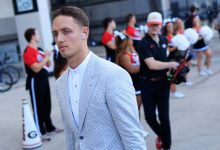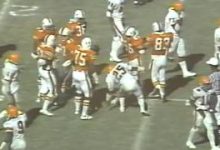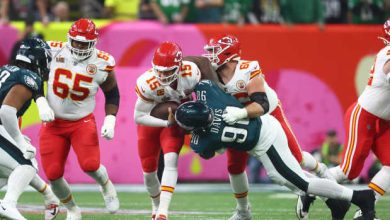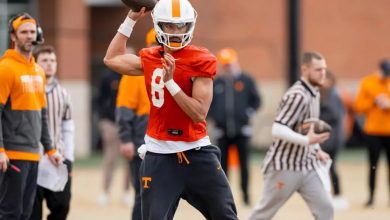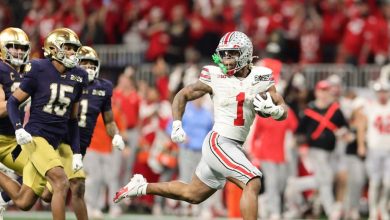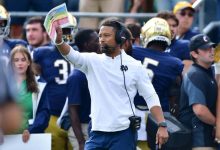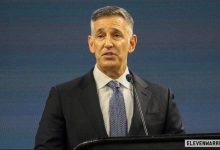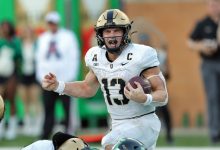Jayden Quaintance’s injury is a concern for Kentucky, potentially impacting frontcourt depth and defensive presence early in the season.

In college basketball, the margin between a good season and a great one often comes down to timing, talent, and health. For the Kentucky Wildcats, the 2025–26 season is brimming with potential under the leadership of second-year head coach Mark Pope. Yet as the program builds a roster filled with explosive scorers, elite defenders, and high-level transfers, one glaring concern now looms over Big Blue Nation—Jayden Quaintance’s injury and uncertain recovery timeline.
The former Arizona State standout suffered a torn ACL in February 2025. While Kentucky has expressed optimism about his long-term recovery, the reality is more complicated. The Wildcats are hoping to contend nationally, and the role Quaintance was expected to play—anchoring the frontcourt, providing elite shot-blocking, and bringing versatility to both ends of the floor—will be hard to replace, especially early in the season.
Who Is Jayden Quaintance?
Jayden Quaintance arrived on the college basketball scene as one of the more intriguing frontcourt prospects in the nation. At 6-foot-9 and 235 pounds, he’s a physically imposing player with excellent mobility, instincts, and a natural shot-blocking ability. In his freshman season at Arizona State, he averaged:
- 9.4 points
- 7.9 rebounds
- 2.6 blocks per game
Beyond the numbers, Quaintance showcased a rare combination of timing, athleticism, and defensive awareness that made him a disruptive force in the paint. His energy on the boards, help-side defense, and improved offensive game positioned him as one of the top breakout players in the Pac-12 before his season-ending knee injury.
Kentucky pursued him aggressively in the transfer portal, recognizing his potential to be a game-changer. When he committed to the Wildcats in April 2025, it was widely regarded as one of the biggest transfer portal wins of the offseason.
The Nature of the Injury
Quaintance tore his ACL in February during a late-season matchup and underwent surgery in mid-March. The initial timetable for recovery suggested a possible return to action around September or October, which would put him on track for the start of the college basketball season in November. However, ACL injuries are notoriously unpredictable, especially for big men who rely on explosive movements and physical play.
Even if cleared medically by the fall, Quaintance will need to rebuild confidence, conditioning, and on-court timing. Players returning from major knee injuries often require additional time to return to pre-injury form—both mentally and physically. Kentucky fans saw a similar situation in the past with players like Jarred Vanderbilt and Alex Poythress, whose recoveries varied significantly in pace and effectiveness.
Coach Pope’s Cautious Optimism
Head coach Mark Pope has addressed the injury publicly with caution and realism. During a press conference in May, Pope stated:
“Jayden’s recovery is going really well, but we are going to proceed with the absolute most cautious caution. We care about his long-term success.”
That quote reflects a responsible approach by the coaching staff, but also subtly acknowledges the uncertainty. The phrase “most cautious caution” suggests Kentucky is preparing for the possibility that Quaintance may not be at full strength—or even available—when the season tips off.
While Pope has not ruled out an early-season return, the coaching staff is wisely planning contingencies that could alter the team’s rotation in the frontcourt for at least the first few months.
Why His Absence Matters
If Jayden Quaintance isn’t ready to go for the season opener, it immediately impacts Kentucky’s frontcourt in several key ways:
1. Defensive Presence
Quaintance was expected to be Kentucky’s rim protector. His timing, wingspan, and vertical explosion made him a natural fit in the middle of a defense designed to pressure on the perimeter and funnel drives toward the interior. Without him, Kentucky loses its most promising shot-blocker and rebounder.
2. Frontcourt Depth
While Kentucky has other forwards and centers on the roster—including Alabama transfer Mohamed Dioubate and returning big Aaron Bradshaw—none bring the same combination of explosiveness and defensive instincts that Quaintance does. If he’s unavailable, Kentucky’s frontcourt becomes thinner and more reliant on role players adjusting to new responsibilities.
3. Roster Chemistry and Fit
The Wildcats’ roster is a blend of freshmen, returning sophomores, and veteran transfers. Pope’s system is predicated on pace, spacing, and constant movement, and integrating Quaintance into that dynamic was part of the offseason strategy. If his return is delayed, the team will need to adjust its schemes to account for his absence and then re-adjust once he returns—a challenge for continuity and rhythm.
4. Rebounding and Transition
One of Kentucky’s intended strengths this season is rebounding-to-transition offense. Quaintance was expected to be a major contributor on the boards, both offensively and defensively. Without him, that fast-break engine might be slower to start.
Potential Replacements and Adjustments
If Quaintance is not 100% at the beginning of the season, Kentucky will likely turn to a combination of players to fill the void:
- Mohamed Dioubate: A 6’7” transfer from Alabama, Dioubate is a high-motor player who can guard multiple positions. While undersized at center, he brings energy and rebounding.
- Aaron Bradshaw: Once a five-star recruit, Bradshaw has battled inconsistency and injuries of his own. However, if healthy, he offers shot-blocking and length.
- Newcomers and rotational wings: Kentucky may also experiment with small-ball lineups that shift wings to the four, relying on speed and shooting to compensate for a lack of interior size.
Coach Pope may adjust Kentucky’s defensive schemes by applying more perimeter pressure to limit penetration, or by using zone defenses to protect the rim collectively.
Long-Term Implications
If Quaintance returns fully healthy by midseason, he could still become a critical piece of Kentucky’s push toward March. His defensive presence alone could swing tournament games, and his offensive growth—especially in mid-range jumpers and finishing—makes him a two-way threat.
However, if his recovery lingers or setbacks occur, Kentucky could find itself with a frontcourt hole that is difficult to fill. The SEC is stacked with big, physical teams—Tennessee, Auburn, Arkansas, and Florida among them—that will test Kentucky’s size and toughness inside.
In a worst-case scenario where Quaintance isn’t able to contribute significantly this season, it would hurt Kentucky’s national championship aspirations, though it wouldn’t necessarily derail them. The rest of the roster is strong enough to compete, especially if other players step up.
NBA and Development Impacts
Jayden Quaintance entered college with NBA aspirations, and rightfully so. His physical profile, defensive upside, and improving offensive skill set had him on early 2025 draft boards before the injury. Now, the injury delays that timeline.
From a player development standpoint, Kentucky’s careful handling of his rehabilitation could allow Quaintance to return stronger and with a more polished game. However, the injury could force him into a multi-year college career, which changes his draft calculus.
Coach Pope and the staff have made it clear that their focus is on Quaintance’s long-term health and career—not rushing him back to win a few early games. That approach, while commendable, could affect the team’s short-term ceiling.
Fans and Expectations
Kentucky fans are among the most passionate in college basketball, and understandably, many are eager to see a healthy Jayden Quaintance suit up in blue and white. But expectations should be tempered, at least in the early part of the season. Even if he returns to the court in November, it may take several months for him to fully regain form.
Fans should focus on the long game: if Quaintance is healthy by January and plays significant minutes in conference play and the postseason, his impact could still be transformative.
A Season in Balance
Jayden Quaintance’s injury doesn’t doom Kentucky’s 2025–26 season, but it undoubtedly complicates things. His upside remains enormous, and if he returns at full strength, he could be a dominant force on both ends of the floor. However, the Wildcats must be prepared to compete without him early, manage his minutes carefully, and recalibrate expectations as the season progresses.
Mark Pope’s ability to adapt, develop other frontcourt contributors, and balance short-term success with long-term vision will be put to the test. But if anyone can navigate that tightrope, it’s a coach with the vision Pope has shown—and a player with the potential that Jayden Quaintance possesses.
Whether it’s in November, January, or March, the hope is clear: that when the lights are brightest, Jayden Quaintance will be back, protecting the rim, throwing down lobs, and helping Kentucky chase a banner once again.

